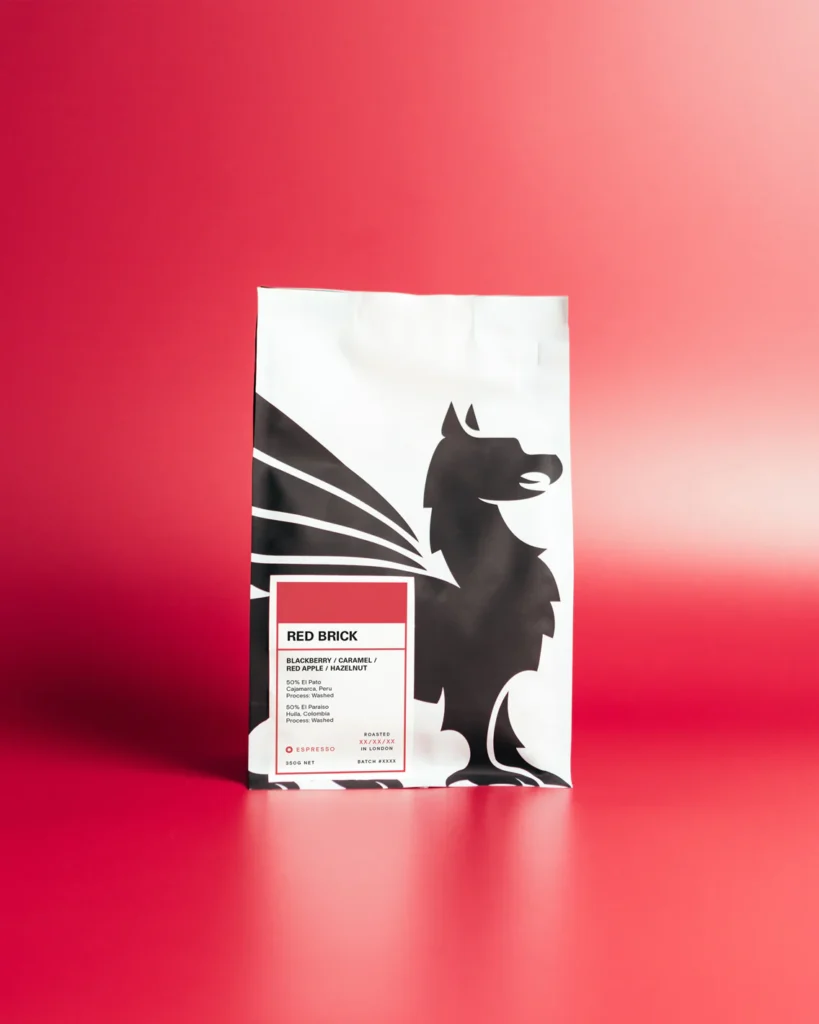Coffee is constantly changing. Whether green or roasted, it’ll always be developing and going through different stages due to the environment around it.
That’s why, from time to time, we choose to update the tasting notes for a coffee in our lineup. In this instance, we’re changing the tasting notes for the Mormora filter coffee from HOPPY / MANGO / COCOA to STRAWBERRY / DRIED MANGO / CREAMY.
This change is the combination of a number of factors, and we thought it’d be interesting to talk you through the process and give you an insight into how these things work behind the scenes here.
Firstly, we cup all our coffees in a controlled, standardised way a number of times a week as a quality control step. Here, we’re checking for faults and assessing what we can do to improve a coffee’s roast profile, but we’ll also grade the coffee against its on-bag tasting notes. It’s at one of these sessions that we’ll usually first notice changes in the overall feel of a coffee, as we’ll see its tasting note marks go down.

This can sometimes happen as a one-off, which can be down to factors such as bag variation, or a defect or deficiency in the cups on the table. In such a case we’ll usually see the coffee’s marks pick up again at the next cupping, as things go back to normal.
Sometimes, though, the change stays consistent over time, and we’ll then start talking as a team about whether the flavour notes on the bag still accurately reflect the coffee inside it.
If we think they do, they will stay, but the roasters will monitor the coffee to make sure we’re alert to any further changes.
If we think it’s changed to the point where the flavour notes no longer represent the coffee, however, then we’ll go through the flavour note process that we go through with new coffees again and change the notes on the label.

This doesn’t happen often. I’ve been here 10 months and we’ve only changed a label while a coffee has been on sale twice in that time, for example. We do however think it’s important to be upfront and transparent about this when it happens, plus we think stuff like this is what makes the world of coffee interesting!
So, why does this happen? Well, as I mentioned, coffee is a natural, living product. It’s always developing and changing, and the green coffee we get into Square Mile is no different. Consequently, we’ll see the moisture content of the coffee change slowly while it’s sat in our green store – it’ll usually trend downwards gradually.
This is normal, and we account for this with all the coffee we buy, but each coffee will react to this differently. Some won’t mind, and their taste will be consistent regardless, but some, like our filter roasted Mormora will be more sensitive to the change, and their flavour characteristics will change as a result.

Our roasting team constantly monitor metrics such as the moisture levels of our green beans and use these data, alongside notes from our QC cuppings, to continually develop a given coffee’s roast profile to keep the end cup consistent week-to-week. Think of it like the small adjustments you make to a car’s steering wheel to stay in the same lane on a motorway; we need to nudge our profiles gently every now and then to keep the coffee where we want it in terms of flavour and body.
There is only so much flexibility they have, however, and so, if a coffee shows us that it just wants to evolve in a larger, more concrete way (it wants to change lanes, to slightly labour the previous analogy) then we have to go along for the ride. Sure, we could probably try and force the coffee back to where it was by radically changing the roast profile, but that would be getting away from our goal of letting the natural flavours in the coffee shine.
Hence, as the coffee changes, the flavour notes on the label cease to hit the mark, and we open up a debate in the team about changing them, just like we did with Mormora!
BUY SOME HERE

Mormora
£14.50tasting notes




